Quality content is content that helps people. It solves a problem, answers a question, or delivers insight your audience can’t find elsewhere.
It’s relevant, trustworthy, and easy to engage with, whether someone sees it on Google or in an AI-powered search result.
But not all content that looks good performs well. Word count alone won’t save you, and SEO tricks won’t work if the substance isn’t there.
Clarity, originality, and usefulness matter. Google prioritizes these indicators, and it’s what your readers will remember.
In this guide, you’ll learn exactly what quality content means today.
We’ll cover key traits like E-E-A-T, give you 9 practical strategies, and show you how to create quality content that earns trust, drives rankings, and appears in AI-generated answers.
What you will learn
- How to research and write content tailored to your audience’s needs
- How to showcase expertise and authority
- Practical ways to beat competitor content
- The role of storytelling, research, and clarity in high-quality writing
- The importance of content maintenance and updates
What is quality content?
Quality content provides accurate, relevant, and original information, helping your target audience solve a problem, complete a task, or make an informed decision.
It’s created with a clear understanding of the audience’s needs and search intent and is written to be useful, reputable, and easy to understand.
In digital marketing, high-quality content should align with search engine optimization best practices, demonstrating expertise, authoritativeness, and trustworthiness (E-E-A-T).
It’s designed to perform well in traditional search engine results pages and AI search experiences.
To be considered high quality, content typically:
- Answers a real question or pain point
- Offers depth, not only summaries
- Uses credible sources and accurate data
- Is easy to read, scan, and understand
- Engages the reader through structure, voice, or visuals
HubSpot’s list of B2B content marketing examples delivers quality by curating real-world campaigns and breaking down what makes each one effective with the “What It Does Well” and “Takeaway for Marketers” sections.

The article is clearly structured, easy to scan, and packed with valuable insights, making it beneficial for new and seasoned marketers looking to elevate their skills.
5 signs of high-quality content
High-quality content isn’t just well-written; it’s purposeful, audience-focused, and built for clarity.
Here are five traits that consistently show up in content that ranks, resonates, and drives results.
1. Relevance
Content should align with the search intent and expectations of your intended audience. That means answering the exact question they’re asking, not a vague variation.
Relevance also comes from timing and context.
For instance, a Google Analytics setup guide is only helpful if it matches the current interface. Outdated screenshots? That’s a quick way to lose trust.
Readers of a blog post on “best mountain bikes” expect rugged frames and trail-ready gear, not road bikes built for smooth asphalt or commuter bikes with baskets.
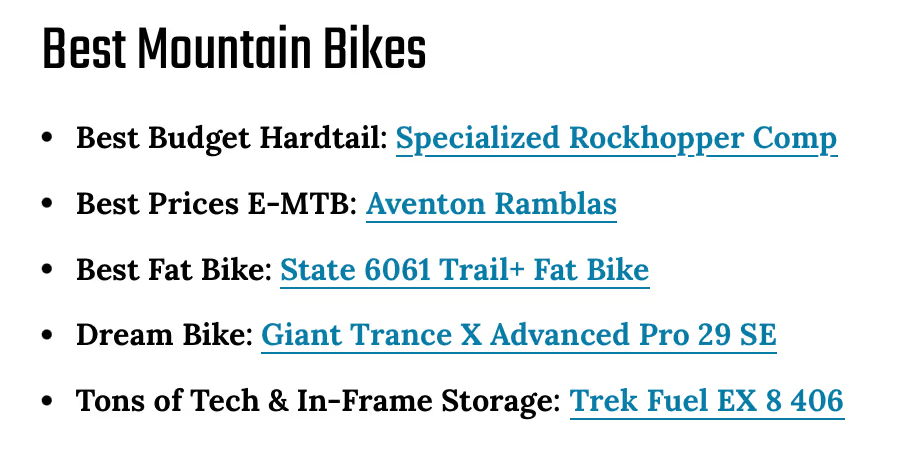
2. Depth
High-quality content doesn’t skim the surface. It dives deep into the topic with detailed explanations, examples, comparisons, and subtopics that reflect a deep understanding of the subject.
Readers should walk away with fewer, if any, questions than they came with.
RTINGS’ Sony A6700 review dives deep with lab tests, real-world use cases, and side-by-side comparisons that go far beyond “good autofocus” or “solid image quality.”

3. Credibility
Credible content is backed by facts, reliable information, and signals of expertise, authoritativeness, and trustworthiness.
This includes citing primary sources, showcasing author credentials, and linking to expert opinions or peer-reviewed studies.
For AI search and search engine optimization, credibility plays a major role in ranking algorithms.
Sites like Healthline and Verywellmind clearly show medical reviewers and cite academic research in their health-related articles.

4. Clarity
Clarity is what makes your content usable. It’s about writing in a way that’s easy to read, with short sentences, smart formatting, and limited jargon.
Make it easy to scan and consume content, especially on mobile. Use clear visual breaks, bullet points, and informative headings to enhance readability and clarity.
Investopedia uses short sentences, bullet points, and plain language to break down complex topics, making guides like “how to save money” easy for anyone to follow.
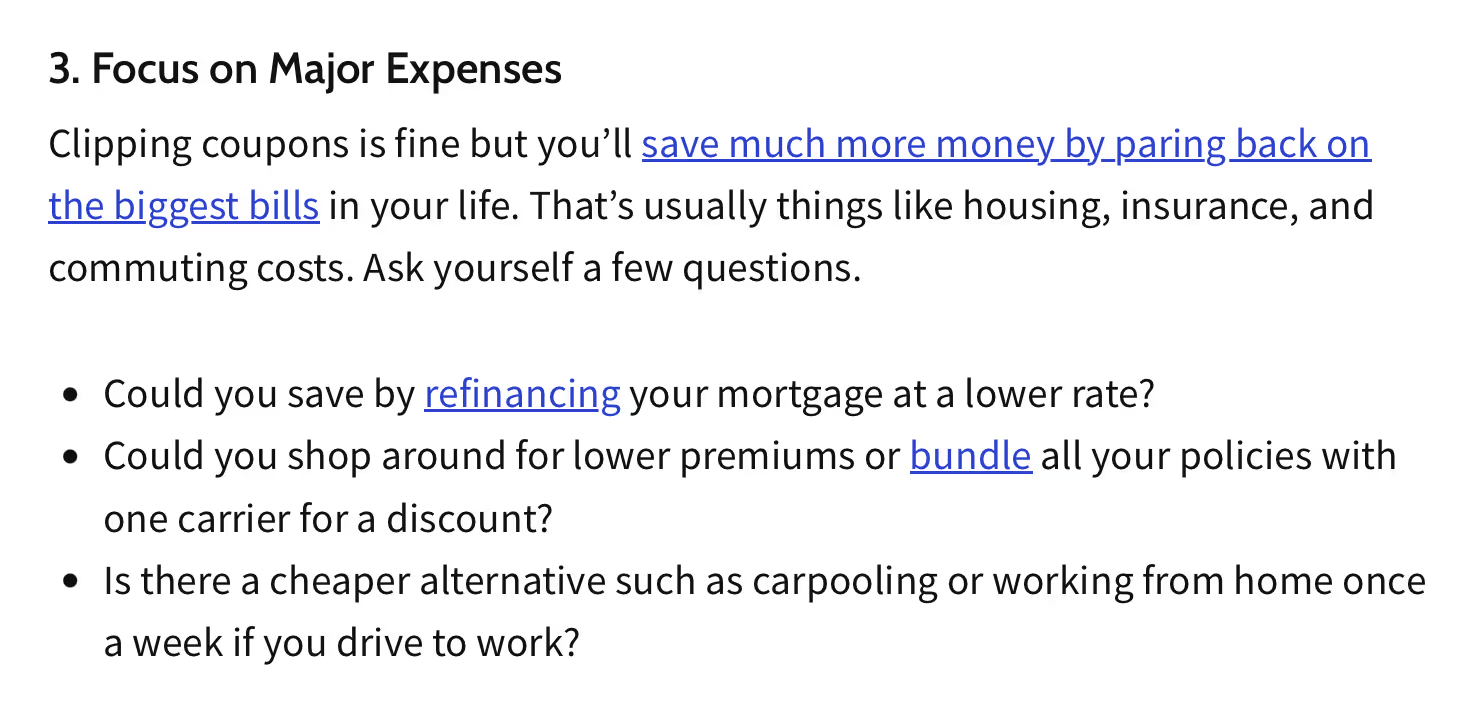
5. Engagement
Great content makes people want to keep reading. Whether through emotional storytelling, interactive visuals, humor, or tone, it sparks curiosity and connection.
However, engaging content doesn’t mean clickbait; it means content that speaks directly to the reader’s pain points and offers a satisfying experience.
“Do You Really Need to Replenish Your Electrolytes?” in The Cut blends cultural commentary with a personal story and bold formatting to create content considered high quality by readers and search engines.

Why is quality content important?
Quality content is the foundation of an effective digital marketing strategy since it drives visibility, establishes authority, and delivers results.
Google and AI systems prioritize content that is genuinely created to help people.
According to Google’s helpful content guidelines, content should be “primarily created to benefit people, not to gain search engine rankings.”
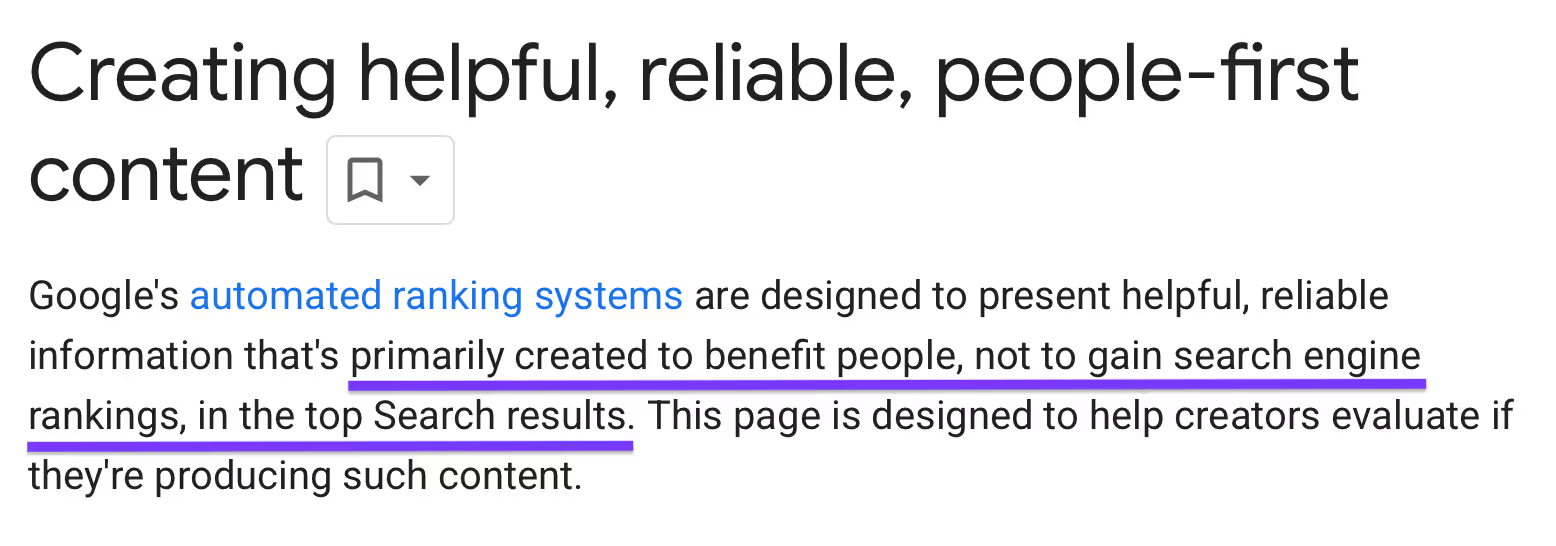
That means usefulness, not just optimization, is the new bar for visibility.
In AI search and large language model (LLM) answers, high-quality content is more likely to be quoted, summarized, or linked.
These systems rely on reliable information and clear expertise to surface trustworthy sources.
Over time, consistently helpful content builds E-E-A-T. That boosts your content quality score and strengthens your brand’s authority in both search and conversation.
Healthline ranks well thanks to expert-reviewed, fact-checked content written in clear, accessible language.
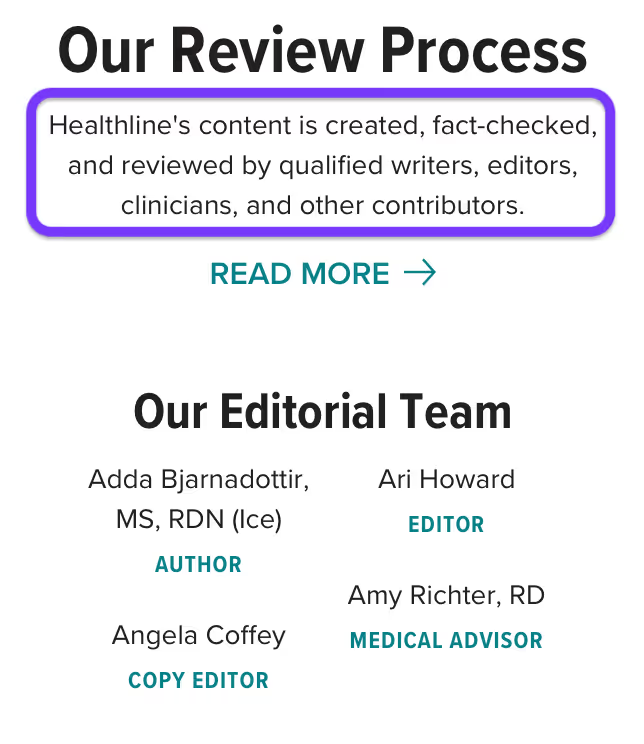
Quality content isn’t just nice to have. It’s your best chance to be seen, trusted, and remembered.
9 tips for creating high-quality content
These 9 practical tips will help you create valuable content that resonates with your target audience, demonstrates expertise, and earns visibility in traditional search results and AI-powered experiences.
1. Research and understand your audience
The content creation process starts with knowing who you’re writing for.
Without a clear understanding of your audience, it’s nearly impossible to meet their expectations or rank for the right target keywords.
Build audience personas that cover demographics, pain points, interests, and goals. Then validate them.
Use social media posts on Reddit, LinkedIn, Facebook groups, or insights from surveys and customer service information to uncover real questions and phrasing.
Audience research tools and social listening platforms help you go deeper, tracking how people talk, what they care about, and what kind of content they consume.
Pro tip: When doing keyword research, plug in those real phrases. Long-tail keywords often come straight from user conversations.
Mirror your audience’s language, speak to their frustrations, and use examples that reflect their world.
This kind of user-first content strategy leads to stronger engagement, more organic traffic, and greater trust, the foundations of any effective content marketing plan.
The Penny Hoarder nails this by tailoring financial tips to mid-income readers. In “How to Pay Off Credit Card Debt,” the advice is practical, relatable, and aligned with everyday struggles.
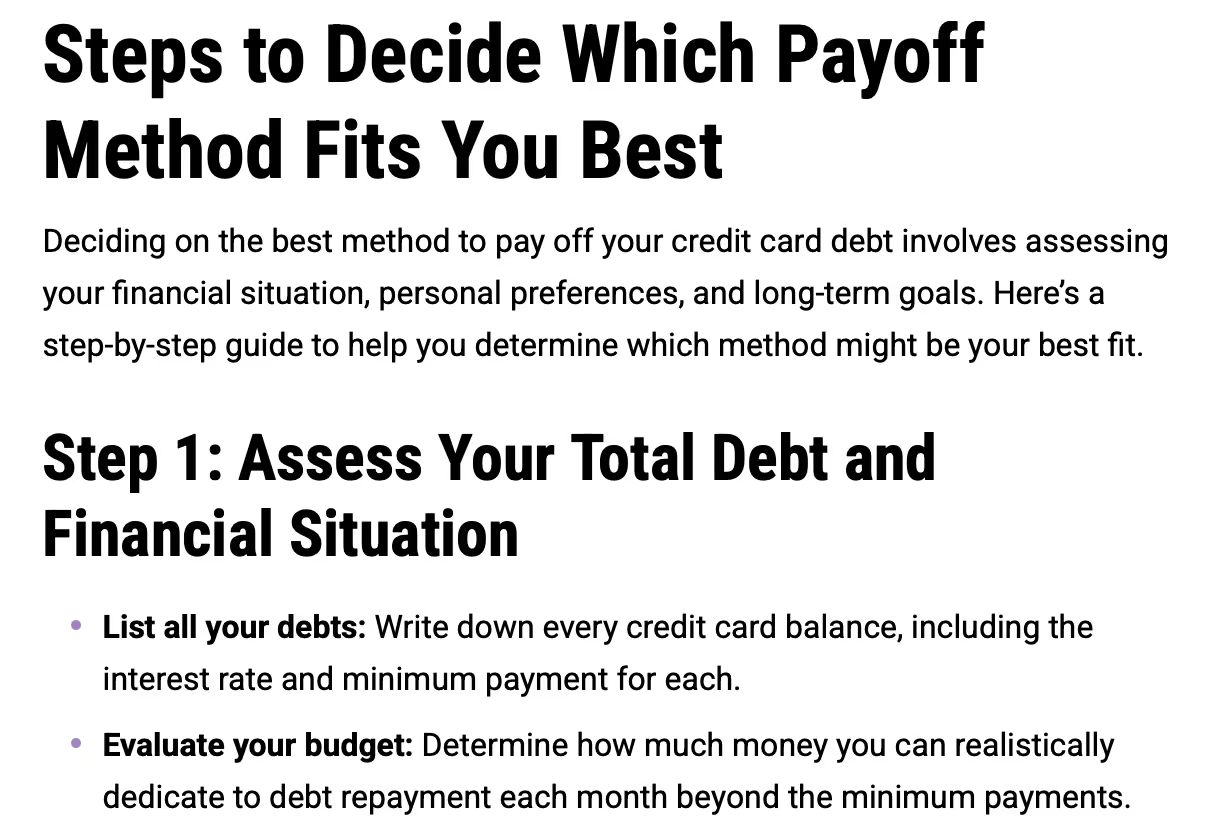
2. Show your expertise, experience, and authority
High-quality content requires more than solid research; it needs credibility.
That means demonstrating real-world experience, subject-matter expertise, and a clear point of view. Together, these form the foundation of E-E-A-T.
Google and AI tools use these signals to evaluate content quality and decide what to surface in search results. Google’s Search Quality Raters—real people—specifically look for lived experience and verified knowledge.
Pro Tip: Add a byline, credentials, or an author bio to build trust signals, especially in YMYL (Your Money, Your Life) niches.
NerdWallet has financial experts create and review its articles, like this one on best investments, to ensure authority and accuracy.
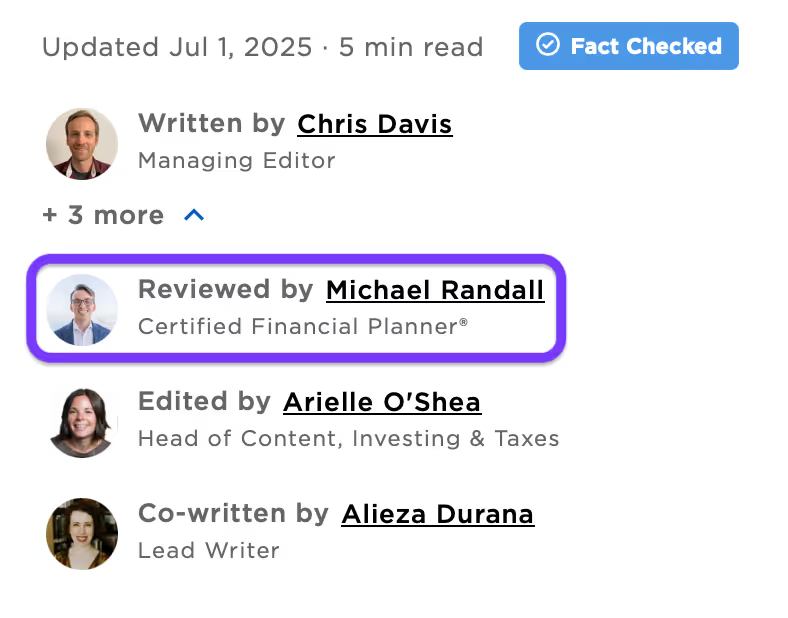
You can also build trust by including primary content: expert quotes, original data, or firsthand insight.
If you can’t interview directly, draw from reputable sources like podcasts, webinars, or interviews—but always explain why it matters.
Glamour Magazine regularly backs health content with expert commentary, as in its article on type 2 diabetes, which features quotes from doctors.
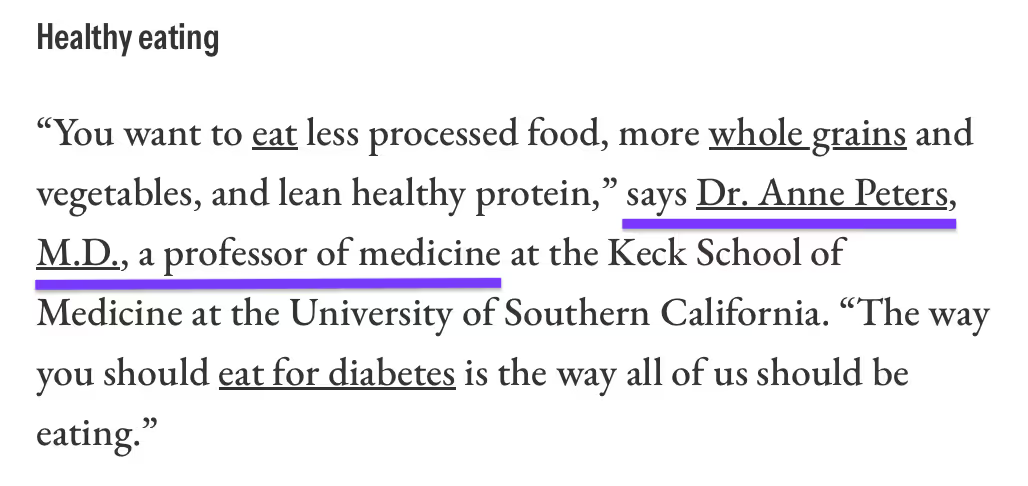
3. Prioritize original insights over rehashing
High-quality content doesn’t just summarize what’s already ranking; it adds something new. It should reflect depth, originality, and a distinct voice.
Instead of echoing the top five articles, ask:
- What’s missing?
- What new insight or connection can I offer?
- What would challenge the status quo?
Maybe you spot a pattern others missed, propose a new framework, or bring in insights from other fields. Even when referencing existing work, use it as a launchpad, not the conclusion.
Readers and Google’s focus on originality means content that reframes or advances the conversation is more likely to rank.
Take personal branding as an example. Most articles list platforms and tactics, but reframing it around micro stories (short, narrative-driven moments) gives creators a more flexible, emotionally engaging way to connect with different audiences.
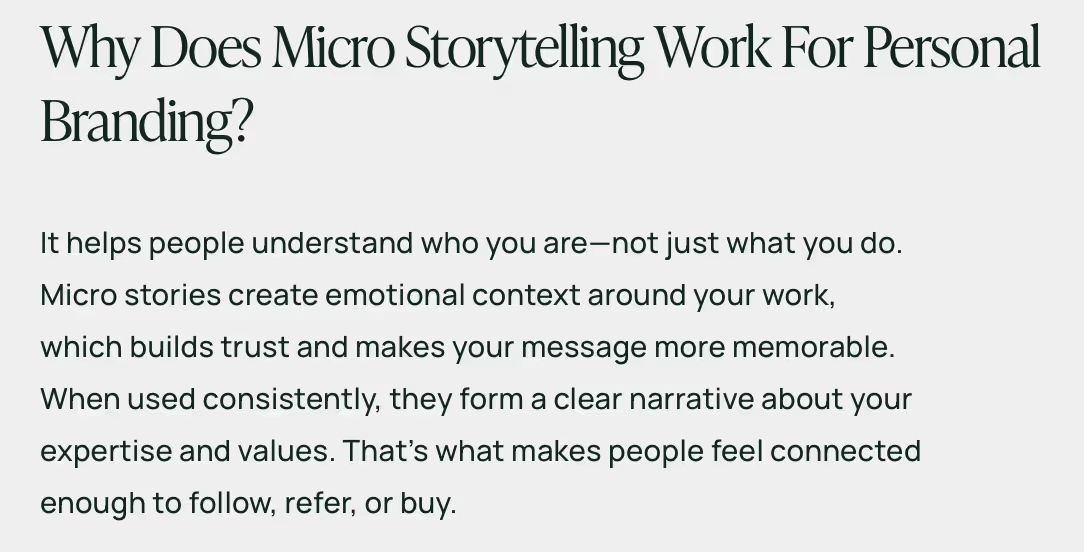
4. Create deep “structural” storytelling
Facts inform, but stories move people. To create quality content that sticks, you need more than examples. You need a narrative.
Use a full storytelling arc to bring abstract ideas to life: Problem → Conflict → Climax → Resolution.
This structure helps your audience connect emotionally and intellectually.
And no, stories aren’t just for lifestyle blogs. They belong in technical guides, SaaS content, and B2B whitepapers, too.
Whether you’re explaining a product feature or unpacking a leadership challenge, showing how someone faced a problem, made a decision, and reached an outcome builds trust and engagement.
Quick tip: If you’re stuck, write the story like you’re telling a colleague what happened, then shape it into your structure.
High-performing content often includes real-world case studies. These give readers something concrete to latch onto and signal depth to search engines and AI.
Harvard Business Review’s case study on reskilling vs replacing a workforce follows the full narrative arc to explore strategy through human tension and stakes. That’s structural storytelling in action.

5. Exceed competitor pages
To earn search engine rankings, it’s not enough to match what top-ranking pages are doing; you have to beat them.
Start by analyzing competitor content:
- What topics do they cover?
- Where are the gaps?
- What’s missing in terms of depth, examples, or current data?
Google’s patent on information gain rewards content that introduces new, valuable information rather than rehashing what’s already available.
Surfer analyzes your competitor's pages to recommend content gaps that they are missing on their pages. This way, you can be sure that your content always exceeds what is available out there.
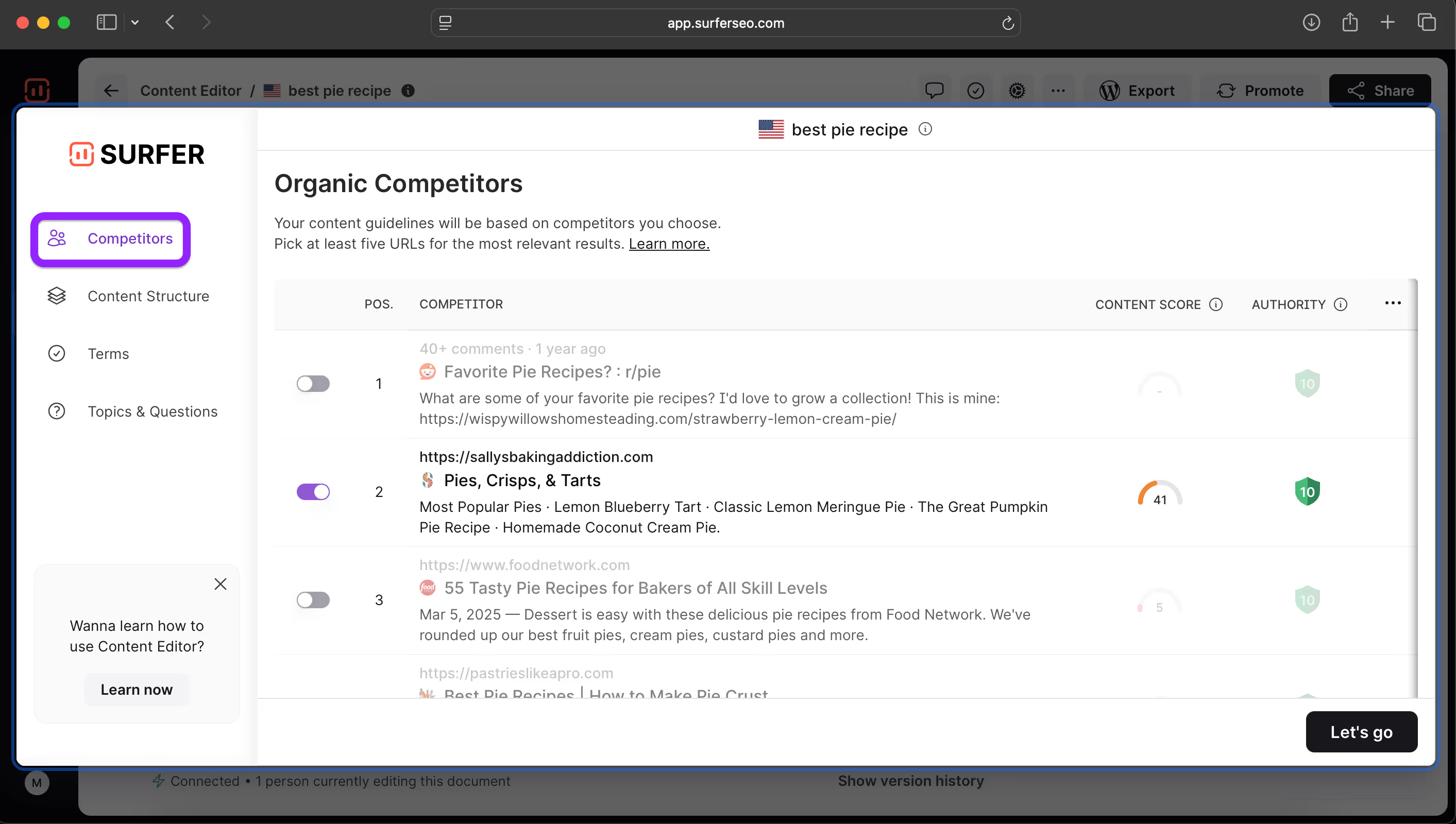
Your goal: Be more useful, current, and comprehensive. Fill knowledge gaps, update outdated advice, and go deeper than your competitors.
For example, someone searching “how to manage anxiety without medication” isn’t looking for vague tips. They want clear, research-backed strategies, which Healthline’s article delivers through expert-backed guidance.
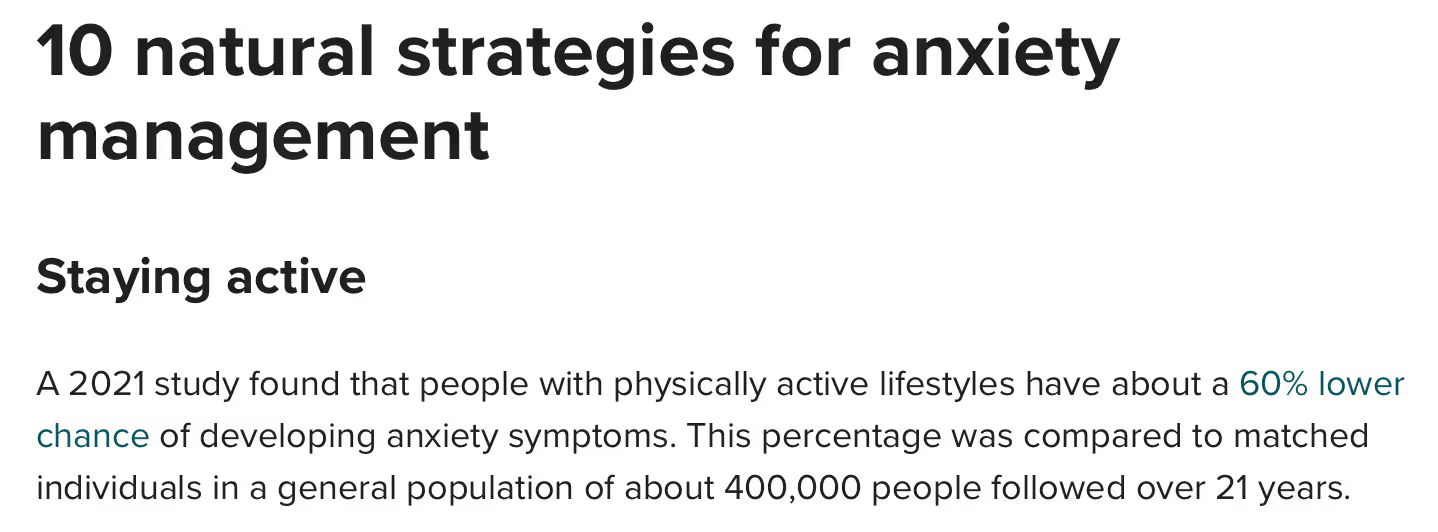
Verywell Mind consistently outranks competitors by combining expert-reviewed mental health content with actionable, well-structured guides.

Tools like Surfer’s Content Editor help you identify subtopics and keywords competitors rank for and highlight what they’ve missed so you can build a more complete SEO strategy.
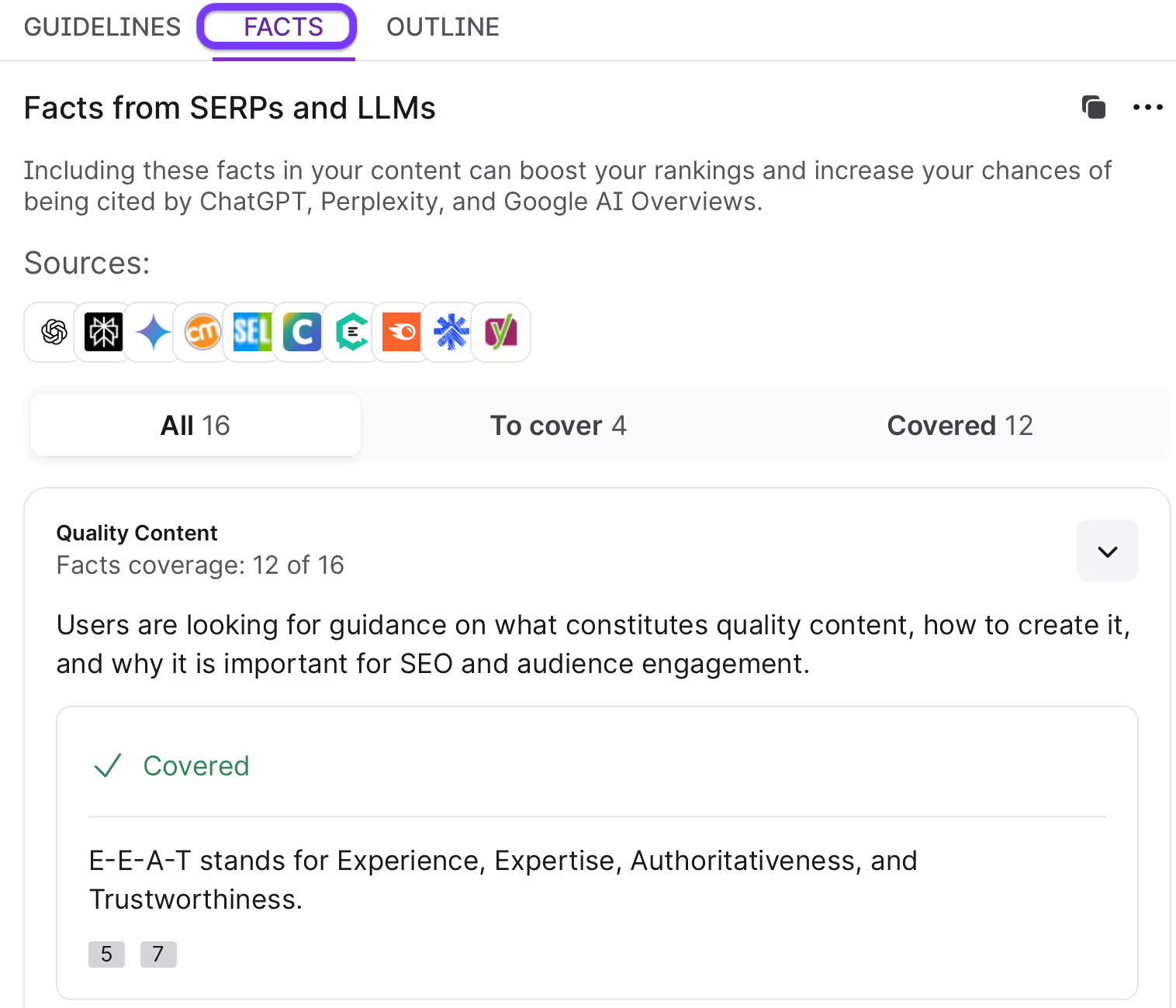
The result? Content that delivers real value and performs better across search engine results pages.
6. Back up your claims with examples, statistics, and research
High-quality content is built on trust, and that starts with reliable information.
To rank content in search engines and AI platforms, support your points with credible sources, recent data, and clear examples. Avoid vague claims or unverified stats.
Whenever possible, link to primary sources rather than round-up blogs.
For instance, if you’re citing how many social platforms people use monthly, skip the Social Sprout summary, which isn’t the primary data source.
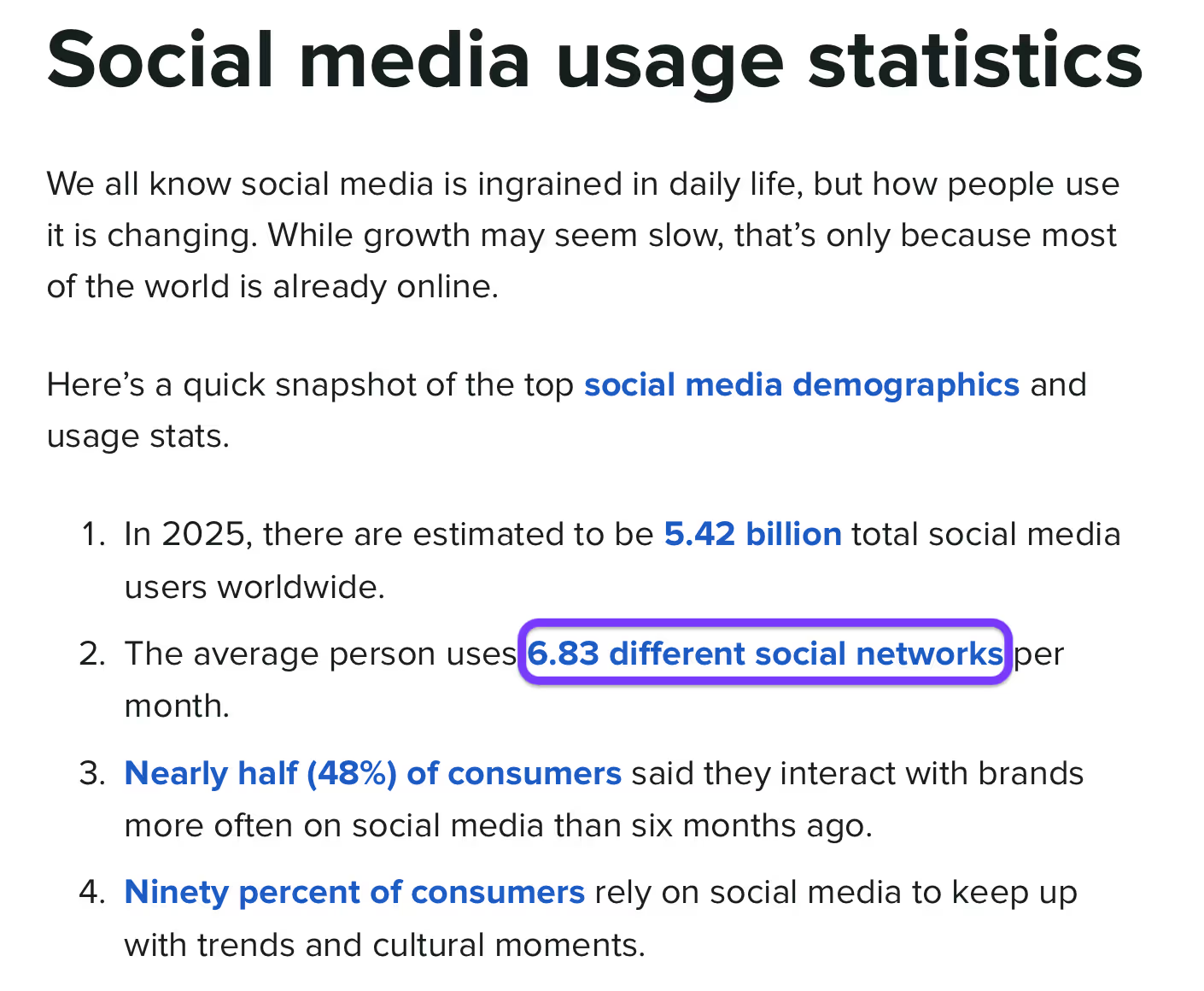
Instead, head straight to DataReportal, which reports original usage data (6.83 networks/month in 2025).
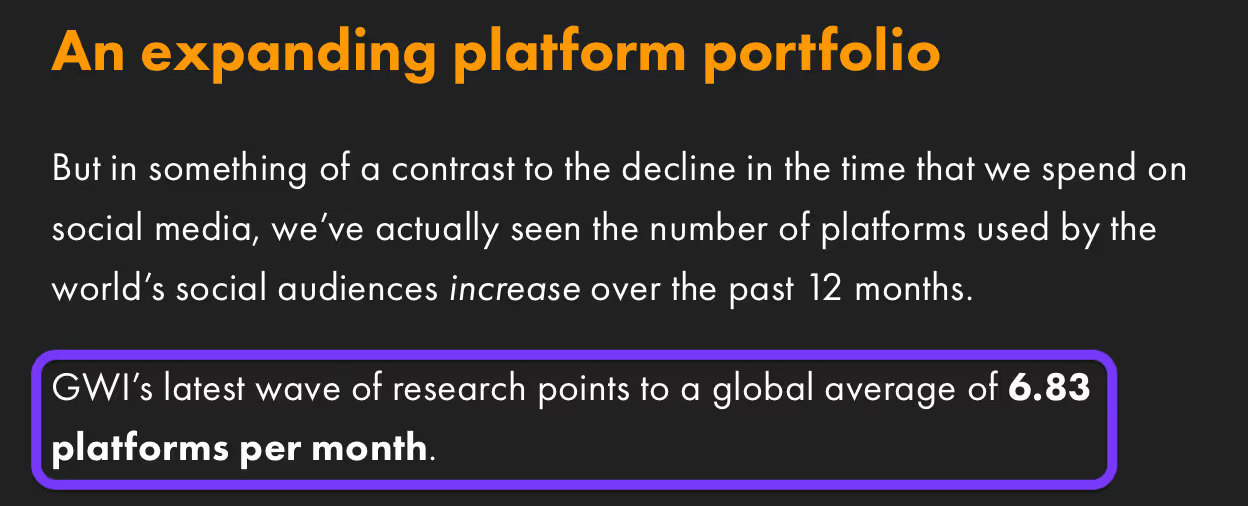
Use statistics from the last two years to ensure accuracy, and when quoting experts, clarify their relevance. Are they a practitioner? A researcher? What unique perspective do they bring?
HubSpot’s blog on AI trends earns trust by backing claims with surveys, case studies, and internal research, boosting both its E-E-A-T signals and audience credibility.
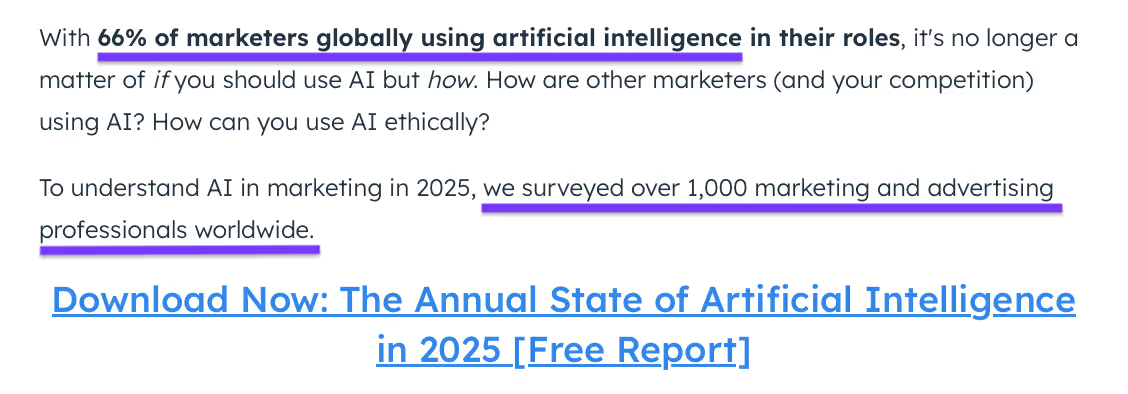
7. Integrate context from broader fields
Creating high-quality content isn’t just about what you know; it’s about how well you connect ideas.
The most effective content often draws from fields beyond its niche, including psychology, sociology, economics, and even art.
These broader perspectives add depth, nuance, and originality, and they signal to search engines that your site’s content isn’t narrowly siloed.
Think of it as intellectual layering. A marketing strategy article that references behavioral economics or a product review that touches on cultural history immediately feels more insightful.
However, the connection must be clear.
CXL’s deep dive into product scarcity connects marketing tactics to psychological research. Instead of listing conversion tricks, it explains why scarcity works, citing behavioral studies, FOMO, and even Aristotle.

This kind of framing builds authoritative, engaging content that performs well in both human and AI-powered search, boosting user engagement and time on page.
8. Break down concepts in simple language
High-quality content is easy to understand. If your audience can’t grasp what you’re saying, even the most relevant content won’t resonate.
Aim for a 6th to 8th-grade reading level unless you’re targeting specialists. That doesn’t mean dumbing things down; it means making complex ideas easier to understand.
Use analogies, metaphors, and real-world examples to explain tricky concepts. Break things down step by step, especially for how-to content.
Keep paragraphs short, use bullet points where useful, and organize your article with clear, logical headings.
Breaking down complex topics isn’t just good UX; it’s good SEO. Google and AI tools prefer clear, digestible explanations that match how users consume content.
Helpful hint: Read your paragraph aloud. If you run out of breath, your reader probably ran out of attention two lines ago.
Clarity also improves user engagement and helps search engines understand your content structure, which can improve your content quality score and SEO rankings.
Investopedia breaks down complex financial topics using plain-language definitions, key takeaways, and step-by-step walkthroughs, such as in its cryptocurrency investing guide.
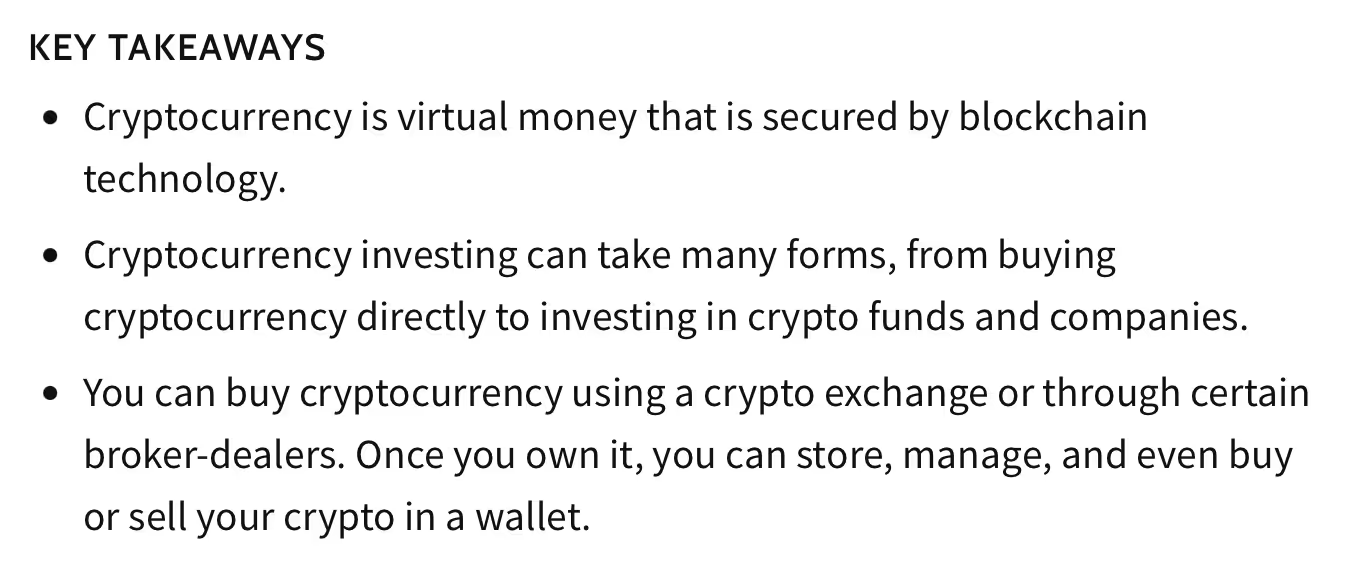
9. Keep your content updated with new changes in information
Even the best content loses value if it becomes outdated. To maintain content quality and protect your SEO rankings, regular updates are essential.
Industry standards, tools, and regulations evolve; your content should, too.
Run periodic content audits to catch expired stats, outdated facts, or examples that no longer apply.
Refreshing these areas improves relevance and signals to search engines that your content is current and worth ranking.
It also increases your chances of appearing in AI-powered search results, which prioritize up-to-date, helpful answers.
Quick tip: Even small updates, like new stats or a rewritten section, can help old pages reclaim higher rankings.
Clever Girl Finance regularly updates its content to reflect changes like new tax laws or market shifts, including its refreshed 401(k) alternatives guide.

Surfer’s Sites tool helps you spot underperforming pages. In the Optimize tab under Recommendations, sort by the Score column to find content that needs attention.

Key takeaways
- Quality content solves real problems, reflects original insights, and prioritizes the needs of your target audience.
- In your SEO strategy, high-quality content is relevant, in-depth, credible, clear, and engaging.
- Google and AI platforms prioritize content created to help users, rather than just boosting search engine rankings.
- Strong content starts with audience research and demonstrates experience, expertise, authority, and trustworthiness (E-E-A-T).
- Original insight and structural storytelling can help your content outperform that of your competitors.
- Always support your points with reliable information, recent data, and primary sources.
- Updating existing content regularly helps maintain relevance, authority, and visibility in search results.





